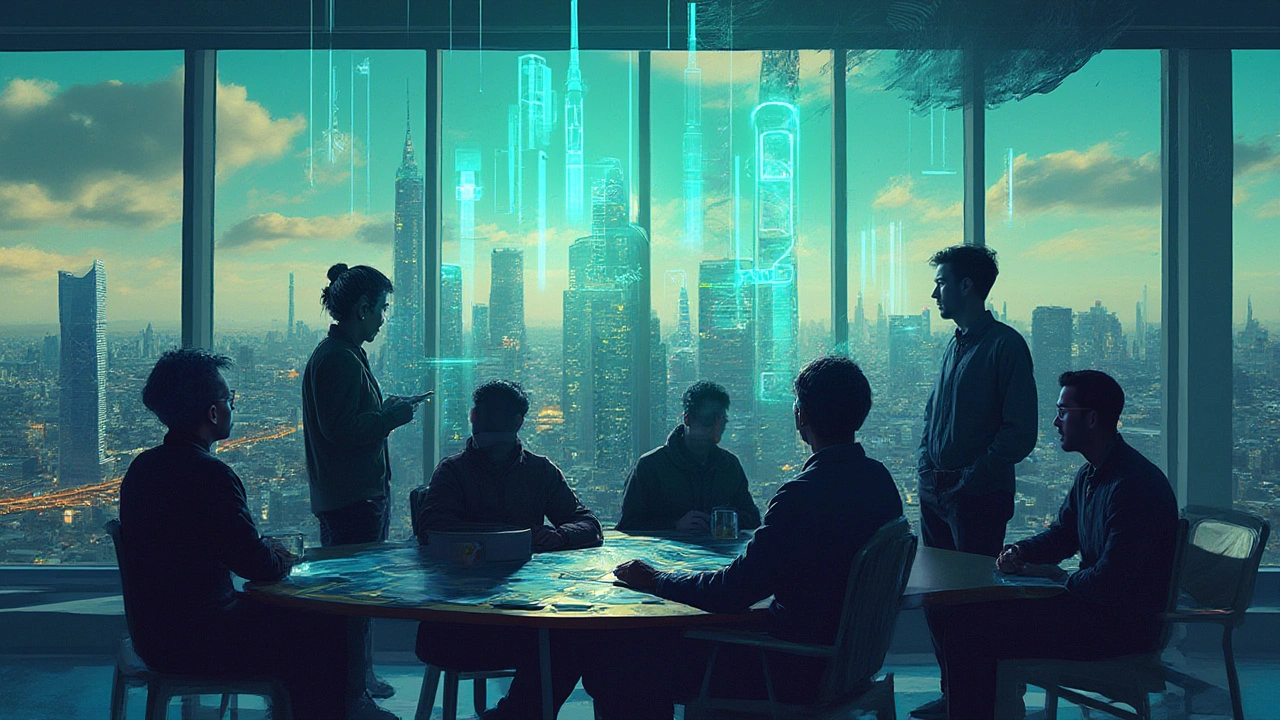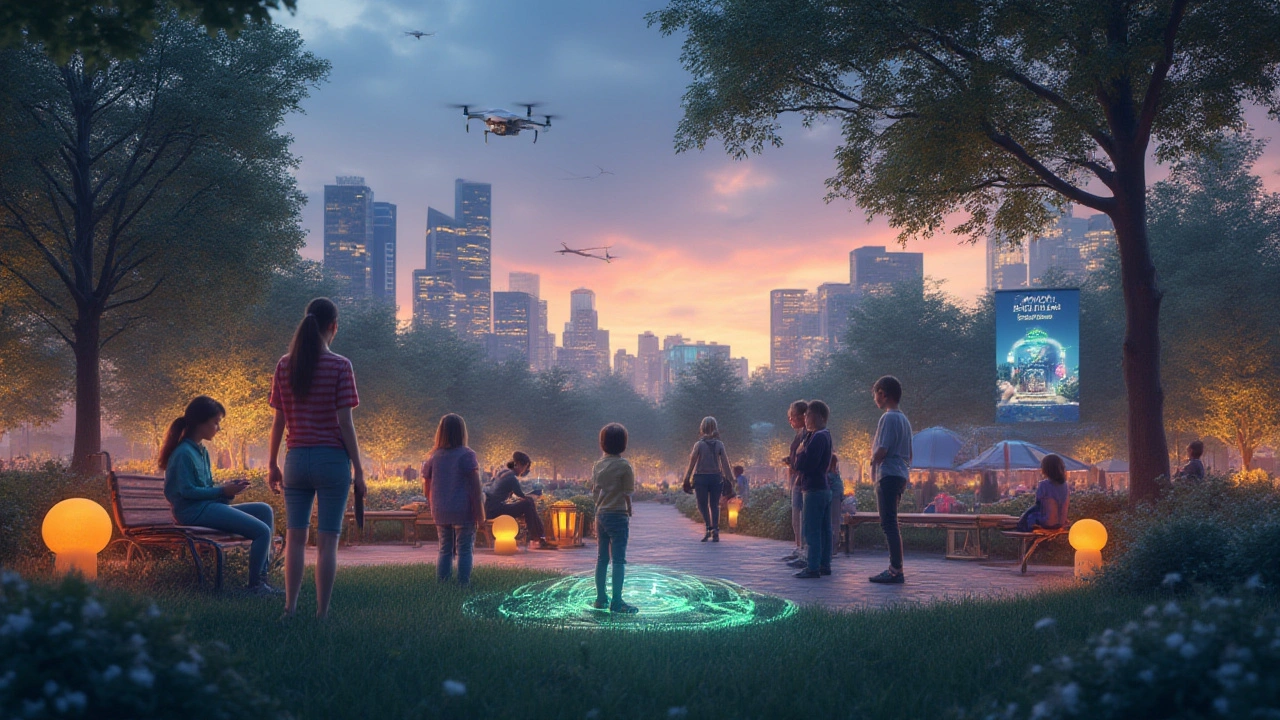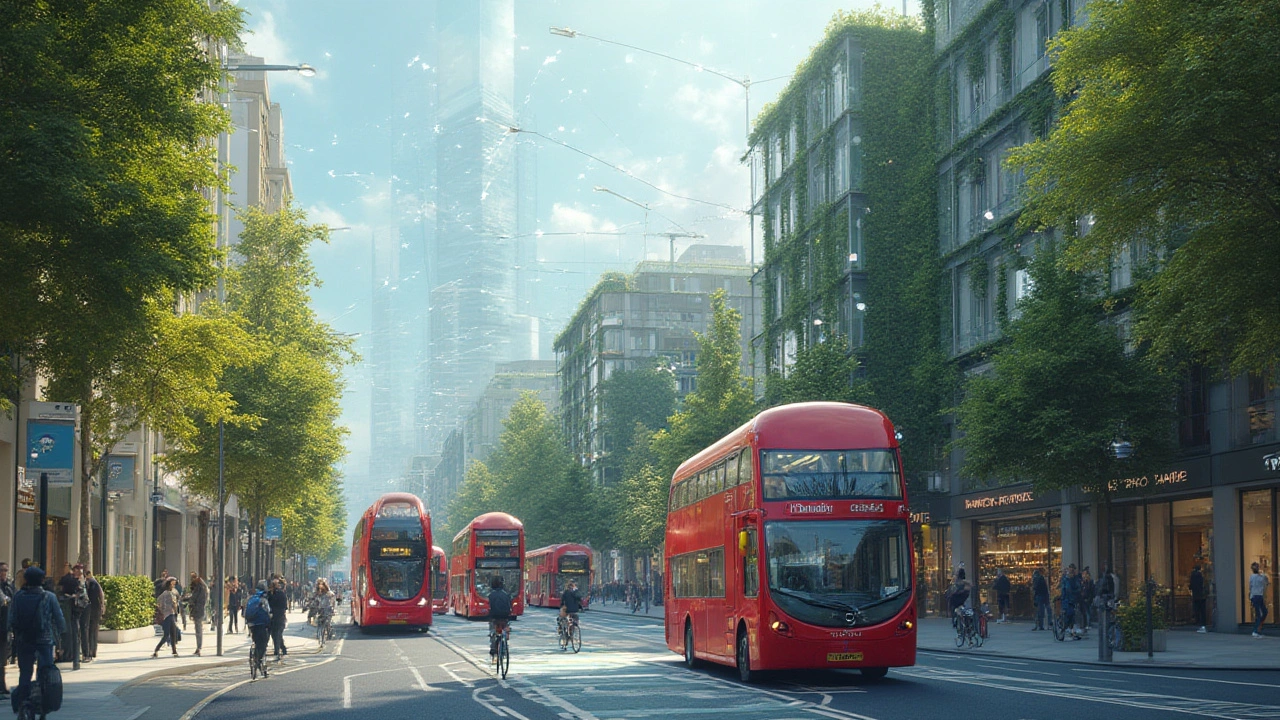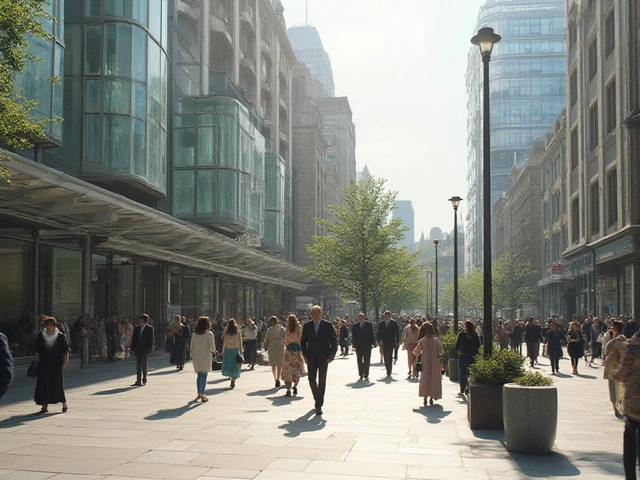Imagine stepping onto a city street where cars glide by without drivers, parks manage their own water, and the streetlights follow you like helpful beacons when you’re jogging with your golden retriever in the dark. Doesn’t sound like something out of a sci-fi comic? That’s the wild edge where futurism and smart cities meet. Most people think futurism is just about sleek art or daydreaming about robot butlers, but it’s actually a big deal in the way our cities are being planned, built, and lived in—right now. The influence of futurism, with its bold predictions and limitless imagination, has shifted from art studios and philosophy lectures straight into city councils and tech companies’ labs. Let’s check out the guts and gears behind this change and see how tomorrow’s weirdest ideas are quietly fixing today’s urban headaches.
From Radical Art Movement to Urban Blueprint
Most folks trace the roots of futurism to the wild energy of early 20th-century Italy, when artists like Umberto Boccioni, Giacomo Balla, and Filippo Tommaso Marinetti fell in love with speed, machinery, and the promise of the future. They wanted to throw out old habits—their art, their music, even the way they arranged furniture was supposed to move, vibrate, or surprise. At first, it all sounded a bit crazy. But futurism’s restless attitude didn’t stick to galleries; it started showing up in the cities themselves. Even today, a walk through Milan or Tokyo reveals buildings and parks shaped by these let’s-break-the-mold ideas.
Those early futurists painted gleaming cities packed with light, glass, and streamlined forms. They weren’t joking: Balla designed lamps for street corners, and Sant’Elia made city plans covered with moving walkways and rooftop airports. People thought their visions sounded bonkers at the time. Today, those design ideas look a lot like the blueprints for our so-called smart cities—urban landscapes wired for connectivity, filled with sensors, intelligent lighting, and flexible zoning. Cities now chase that same sense of momentum, movement, and optimism about what’s possible. It’s no accident we see echoes of those radical sketches in things like car-sharing schemes or buildings that seem to breathe thanks to advanced ventilation and energy systems.
Modern architects and urban planners often admit drawing on futurist inspiration. Take Norman Foster, the mind behind many high-tech eco-towers, or even the world’s splashiest smart city projects like NEOM in Saudi Arabia. Their obsessions—dynamic forms, transparency, lightness, adaptability—are classic futurist ideals. And while the world’s not overrun by robot valets (yet), futurist thinking has made cities more willing to try the unexpected, to anticipate needs before we even think to ask for them. Sometimes the most important part isn’t a single technology, but the attitude: How radical can we get with the way we solve daily city problems?

Smart Cities: Bringing Futurist Ideas to Everyday Life
When people talk about smart cities now, they often lead with sensors, apps, and self-driving cars, but the biggest leap isn’t just plugging stuff into the internet. It’s planning cities around the question, “What if we flipped the script completely?” This is where that wild futurist spirit starts to shine—turning every tangle of traffic, energy fart, or trash heap into a chance to rethink the rules. You’ve probably heard of Songdo in South Korea, where they built whole neighborhoods with every block hardwired for real-time data. That’s not just about being super-efficient; it’s about making cities adjust to human needs instead of the other way around.
One cool fact: In Barcelona, the city used sensors to water public parks only when soil dryness hits a tipping point, cutting water waste by 25%. That idea—let the city itself ‘think’ and adapt—is straight out of futurist playbooks from a hundred years ago. Take Singapore’s “Smart Nation” program, which tries to predict urban bottlenecks before they happen. Or Amsterdam, where floating homes double as energy storage centers—if the old painters could see this, they’d probably think they were dreaming. This stuff isn’t theoretical. In 2025, over 200 cities are rolling out pilot programs based on these futuristic, adaptive principles.
But it’s not all tech for tech’s sake. Futurism pushes us to rethink how public art, events, and green spaces shape community. How about digital murals that change as you walk by? Berlin has those. Or parks that host micro-farms and VR concerts at the same time? That’s already happening in Shanghai. The spirit here is more than gadgets—it’s the mix of surprise, openness, and creativity that turns a bland patch of concrete into something memorable and alive. If you walk your dog Baxter through a connected park at night and the lamps brighten because they’ve noticed you, that’s futurism—not as a style, but as a way of caring for the people (and pets!) that call the city home.
There’s also a new wave of crowdsourced urban design. City governments and startups alike ask regular people what they want to see, using apps and social media polls. Turns out, people have some wild and useful suggestions, like pocket parks on rooftops, pop-up co-working spaces in train stations, or transit schedules tailored to their daily habits. Futurist attitudes encourage this kind of bottom-up thinking, trusting that the next big idea could just as easily come from someone sitting in a coffee shop as from a PhD in city planning.

Tips for Riding the Futurist Wave in Your Own City
So, how do you tap into all this futurist energy without getting swept away by every wacky gadget that comes along? The trick is to blend creative vision with practical street smarts. If you’re a city official, urban planner, or even just a regular citizen who cares about where you live, there are a handful of real steps you can take to push your city toward a smarter, more human future. And yes, you don’t need to be a tech wizard to get started.
- Stay playful and curious: The best smart city ideas come from asking what else you could do with what’s already around. Instead of adding more surveillance cameras, maybe see how regular street art or games can make people feel safer at night. Think like an artist or a young kid—what would make you smile or want to explore?
- Welcome new voices: If you want a city to work for everyone, it needs everyone’s input. That means setting up low-barrier channels (like quick phone polls or sticker boards in subways, not just email forms or city hall meetings). Look up Paris’s “budget participatif”—locals really get to decide how public funds are spent on murals, bike lanes, or new tech.
- Test in small bites: Sometimes the most futuristic ideas take off best when you try them in tiny pieces first. Think about ‘parklets’ in San Francisco—just a few parking spots turned into mini-gardens became so popular, the city expanded the idea citywide. Advocate for your local council to run pilot programs before betting big.
- Focus on clean and green: Futurism isn’t just about digital trickery. The most future-forward cities keep coming back to basics: clean energy, waste recycling, and healthy air. The futuristic city resists pollution, not just traffic jams. Push your favorite park or library to install solar panels, offer e-bike rentals, or start compost pilot projects.
- Keep an eye on the nuts-and-bolts tech: Sure, anyone can dream up a car that flies. But the next useful gadget might be as simple as adaptive signal lights that cut your commute by five minutes. Follow your city on social media, subscribe to smart city newsletters, or join local hackathons. Sometimes your ideas will find the right ear.
Futurism isn’t a checklist; it’s more of a lens—a way to see that the boring sidewalks and stale bus routes of now could be something extraordinary tomorrow. You don’t have to wear silver jumpsuits or learn coding to nudge things in the right direction. Just sharing a smart, bold idea at the right moment, or supporting the next green pilot project at your local rec center, sends ripples through city life.
This isn’t fantasyland. Some of the wildest features already in place—energy-harvesting roads in the Netherlands, real-time pollution maps in Los Angeles, or community-run sensor hubs in Fukuoka—started out as sketches in a notebook, or pie-in-the-sky posts on internet forums. The thread tying all this back to the original futurists? The unshakable belief that cities should move forward, never settle, and sometimes take a risk on the weirdest ideas just in case they end up being wonderful. Next time you see a self-driving bus whiz by or your block transforms into a pop-up festival, thank a futurist (or at least the kid in your building who put that idea out there). The cities of tomorrow are being shaped by the restless, intuitive, sometimes bizarre creativity that futurism gifts to us, and the best part is—anyone, anywhere, can join in.




